First, I will apologize for the lack of scientific-y looking diagrams and inspirational-y photos. I hope to add them one day when I figure out how. I’m not good at computers like I was in elementary school (with DOS and computers that needed floppies to boot up). Second, I want to talk about cornering on a road bike. I think this is equally valid advice for cornering on a mountain bike, but the visual cues are going to be different. Specifically, I want to talk about what advice is out there and what is not. I have something new to add. So, first of all, if you do a Web search for advice on how to get better at cornering, you will find two types of results.
- Tips on what to actually, physically, do during the cornering process to maximize your exit speed and safety. (For example this great article by Coach Carl)
- Tips on how to overcome your fear of the sensations of cornering and to learn the edge of your ability to lean and grip. (This article is one of the more complete of this second type)
The first type of advice is really great for people who need to understand the mechanics, or who like thinking about strategy. Coach Carl has a very old school attitude, but I like how he talks about the unexpected in turns. Sand in your line? Straighten the bike, roll through it, brake and reset for a slower, tighter exit. Fail to do this things and you will crash. It makes it very easy for those of us who are constantly second guessing ourselves to understand what to do. The second type of advice is also really good stuff. It assumes that your mental difficulties with turning are your fear of leaning the bike hard. There are practice exercises that are probably really great, though they have always been too much work for me to find a place to do them to actually try them. Rather than focus on riding particular lines, this type of advice focuses on pushing your boundaries in a safe environment where messing up doesn’t mean riding into cars or off the side of steep mountain descents. I am a big fan of this type of advice. What you won’t find is advice on what to do if that advice doesn’t work. Typical advice never works for me, so I always have to blaze my own path taking bits and pieces of what other people say. My experience with cornering when I started this particular path was
- I would look at the exit of the turn, “or as far into the turn as I could see,” as the advice articles said to do, but would still end up heading straight for the outside edge of the corner on all but the slowest or the widest of turns.
- I would lean the bike as much as I could, but it still would not turn as tightly as the people in front of me whose lines I was trying to mimic
- I would relax my grip by opening my fingers around the brakes and bending my elbows, but my body would simply tense up in this new position instead of become loose like the advice said it should.
- Partway through a turn, particularly a blind mountain descent where the exit of the corner is not visible until halfway through, I would panic, straighten the bike, slam the brakes, then readjust for another turn, effectively making every turn into two separate turns and killing my speed.
- I still have no idea how much gravel/sand/roughage in a corner constitutes a hazard, so I brake for everything I see that isn’t pure smooth asphalt.
In the past weeks I have been focusing on slow speed cornering in the hopes that I could diagnose my difficulties and understand why the standard advice wasn’t working for me. First and foremost, my goal was smooth cornering instead of fast cornering. So the first thing I focused on was point #4 — making sure that each corner I took involved exactly one cornering maneuver, followed by a smooth lean, and widely arced follow through. I found that hairpins are the hardest to ride smoothly. This is probably because there is the greatest difference between entry and exit speed and the fact that you would have to spin your head around like an owl to see the exit before you start turning. So the line on a hairpin is extremely hard to pick. That said, it’s a great diagnostic tool. This is what I discovered.

Many people will advise an “outside-inside-outside” approach to cornering. What this means is that, suppose you are making a right turn, first you position yourself to the far left edge of the road. Doing this effectively broadens the turn for you. Then you aim for the “apex” of the turn, which will be on your right. The apex means the innermost point of the turn. By aiming for the apex, you maximize your turning angle. At this point you are almost done. You widened the physical area to turn and you narrowed the space you need to turn, so you should be able to follow through with maximal speed. The final step is to “eye the exit” and hold your line until you complete the turn and straighten your bike. This will bring you to the outside (left side in this example) of the corner again as you widen your turning area in the second half of the corner. Sounds easy, right? Here’s what most people miss, and I think they miss it because they are not mountain bikers. When a two wheeled vehicle turns it must, even imperceptibly, first swing outside (left) before entering the lean for the actual turn (right).
The physics behind a two wheeled turn go like this. When you are riding in a straight line, your weight is balanced evenly on both sides of your tire. If you want to turn right, you have to shift your weight onto the right side of center, which means you have to create contact between the rubber on the right of the centerline of your tires and the road. With your forward momentum, if you were to turn the handle bars to the right with all your strength, what would happen? You would go flying towards the pavement on your left side. A left turn is simply a controlled version of this action. Turning the handle bars to the right actually tips the bike onto its left side where the combination of friction and asymmetric road contact carry you through the turn. This was discovered several decades ago by scientists experimenting with a motorcycle that had handle bars that could not turn. They tried to turn the bike with weight shifting alone and it was not possible. The bars must turn, and they must turn to the outside of your desired direction in order to corner the bike.
You can see, even in Coach Carl’s very scientific explanation of the turning physics of a bicycle, the typical omission of the moment of initiating the turn. What many roadies think of a right turn is actually a controled leap from your left side to your right side! I say roadies think this because they are not accustomed to separating their center of gravity from the bicycle in the way that mountain bikers are. A mountain biker understands that in order to use a bank to maximize their cornering speed they must swing the bike into the turn, then up the bank, then back down the bank along the line of their chosen exit. A mountain biker making a banked corner is actually turning three times, not one. Furthermore, thanks to the banked surface, a mountain biker can literally throw the bike around harder than a roadie because the bank enables more traction at higher speeds. So, the first thing that I learned about cornering that none of the road biking advice could tell me is that there is always a moment at the point of entry to the turn where you are literally weightless on your bike as you throw yourself into the turn. Immediately after you cut the bars outside and shift your weight inside, you will actually have to land this minute leap.
The spooky part of cornering at high speeds is that the faster the speed, the shorter the amount of time you have to make this incredibly precise adjustment, and consequently the harder your landing from this leap is going to be. Moreover, the tighter the turn, the more you have to lean. So in a very tight high speed corner, you are not gradually leaning the bike into the turn, continuously able to adjust your weight to maintain traction, you are leaping sideways on your bike and landing with your wheels aslant of the road surface at great force. Do it wrong and you land with your shoulders instead of your rubber.
Let’s take a moment now and appreciate this discovery. Cornering on a road bike is fucking spooky.
With this understanding in hand, I was able to unravel some of my difficulties in turning smoothly. First, let’s go back to the standard advice: Brake before you enter the turn to shave off enough speed that you can control your line and exit quickly. When you brake, your body shifts forward on the bike. That’s because you stop the bike, but you don’t stop your body. You end up with a lot of weight on the handle bars and a very heavy feeling in your arms. A leap is a very light feeling. The heaviness of the braking must end before entering the turn. There is a non negligible interval of time and space necessary between the end of your braking activity and the beginning of your turning activity in order to maintain maximimum control and friction. In this interval you have to shift your weight back, taking it off your handlebars and your front wheel, so that you can regain the looseness necessary in your arms to read the road conditions and steer the bike, as well as redistribute your body weight evenly on your tires maintaining maximal friction. If you don’t do this, then your front wheel will bear too much weight and slight imperfections in the road surface will have a magnified effect on your trajectory and you could lose control.
Cornering tip #1: If you can’t figure out why your cornering still sucks so much, try separating the corner into the act of braking, followed by a quick inhale, followed by the act of entering the turn. Exhale as you start to lean into the turn to help you relax and take the edge off the spook.
I find that the image of leaping into a turn is also very helpful for me in maintaining traction and a sense of control over the bike. If you have ever tried to catch air on your bike, you can definitely feel the difference between a smooth landing and a piece of crap landing. When you don’t land properly, the entire bike rattles and your own skeleton gets jarred in the process. I usually feel a bad landing in my wrists and my neck. But a smooth landing feels like the ground is coming up slowly to meet you rather than you coming crashing back down onto it. The leaping sensation of a good turn is similar. There is the moment of weightlessness, followed by a smooth reconnection between yourself and the road surface. If you listen to your bike you can actually hear your tires spin momentarily faster as you head into the turn. This is the same sound they make when you come down off a jump on a dirt or a downhill course. Looking back at the suggested lines for a 90º turn, you can see that they are a smooth transition from straight into turned. There is no suggestion of the moment of initiating the turn. I think the reason why I was unable to follow others despite attempting to place my bike in their exact line was that without being aware of the moment of initiation, I was trying to directly lean the bike into the turn along a line with only one curve in it, like above. This was putting an upper bound on my ability to lean because I was not giving my body the time to shift its weight inside, and my wheels the time to tilt over onto their inner rubber edge.
Cornering tip #2: If you find that you repeatedly go wide in a turn, despite leaning the bike as much as you can, try exaggerating the entry maneuver so that your line looks more line a ç than a smooth arc. The more you swing out on the entry of the turn, the more time you create between the leap and the landing to shift your weight and lean the bike. Do this at slow speeds first in order to become aware of each of the different motions that go into turning
As a final comment on cornering, I want to iterate my discovery in a previous post on where to look during a turn. The “apex” of a turn is the innermost point, as if the road was bending on a hinge and that hinge is the apex. The problem with all the advice I heard that says to look at the apex is, which side of the road is it on? I found it is more helpful for me to look at the inside edge of my lane than it is to look at this imaginary apex point. Similarly, advice to “eye the exit” has proved unhelpful to me. Both focal points, the exit and the apex, encouraged me to look too close to where my bike actually was, and not close enough to where I wanted it to go. For example, when I tried to look at the exit, I would look at the point where the road is officially not in a corner anymore and is objectively going straight again in the new direction. As my friend Gary explained to me, when you fix your eyes on that point, it looks like it’s coming at you really really fast. On the other hand, if you look up the road, even into the straight bit, your perception of your speed diminishes.
For a spooky rider like myself who tenses up very easily, I found the following imagery to be much more helpful than “apex” and “exit” in choosing where to look and how to judge if my chosen line was going to successfully bring me through a curve. First, when braking, I look straight ahead at the point that I want to initiate my turn. This is past the point where I will release my brakes. In the moment between my brake and my turn, I switch instantly into “look at the corner” mode. I sweep the corner to get a general idea of where I’m going to aim for. Then I turn the bike and lean, fixing my whole body into the position I plan to hold for the duration of the curve. When I am leaning the bike, to the best of my ability, I look in the direction of the point where I plan my turn to complete, but I don’t look at anything in particular. Instead, I allow my focus to widen and blur a little bit, leaving the corner of my vision to trace the inner edge of my turn, while the rest scans the road and the outer edge of the turn to make sure I’m not heading into disaster. What I never do (on a good day) is look directly at the outside edge of my turn or anything I am trying not to ride into. I find that with practice I am able to sense these things without having to directly look at them. I also don’t pay any attention to the exit of my turn. I’m all about the entrance, the hold, and then the burst out the other side. I consider my turn exited when I feel ready to start pedaling again, or to set up for a second curve if there’s one of those.
Cornering tip #3: Pick your line and then trust it. Avoid the temptation to verify that you are not heading for the outside edge of your turning space, or into some road hazard, by looking at those things. Instead, relax your vision and keep your eyes pointed in the direction you ultimately want to go while spreading out your awareness to take in other important information as your ability to concentrate allows. Note that your bike and your eyes will not be pointed in the same direction until you finish turning.
These were my most recent discoveries about how my body and mind work during a corner. I’m still not very good at cornering, but I love the thrill of knowing I’m at my edge every time. I love feeling myself improve. And most importantly, even when I don’t improve, my inner monologue is always saying, “oh DARNIT! Just gonna have to ride more miles now!”
Happy cycling, happy cornering, and Happy Sickness.





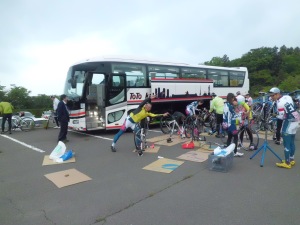
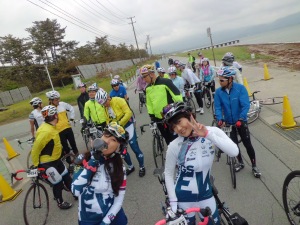

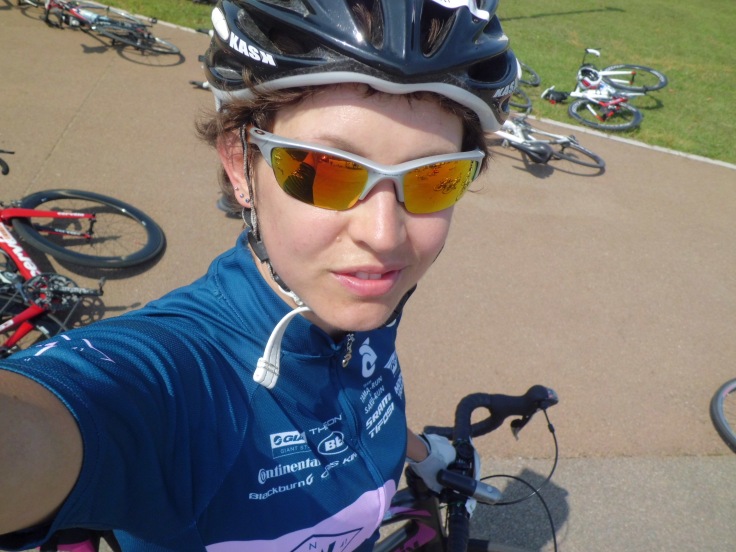
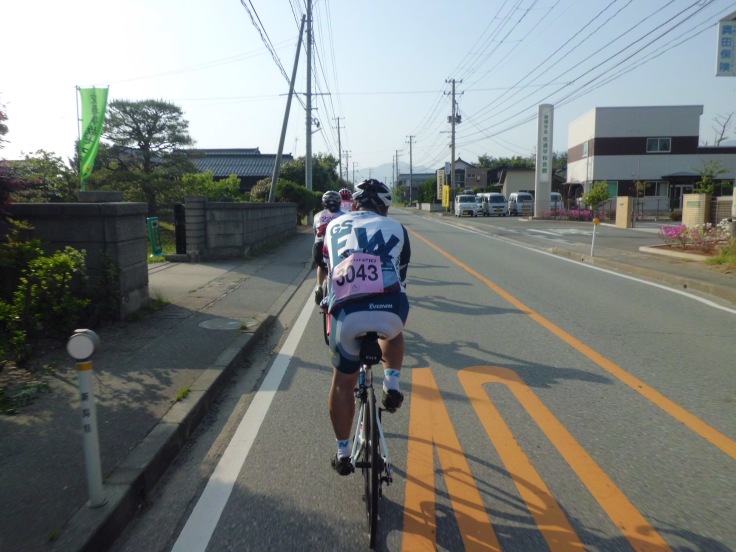
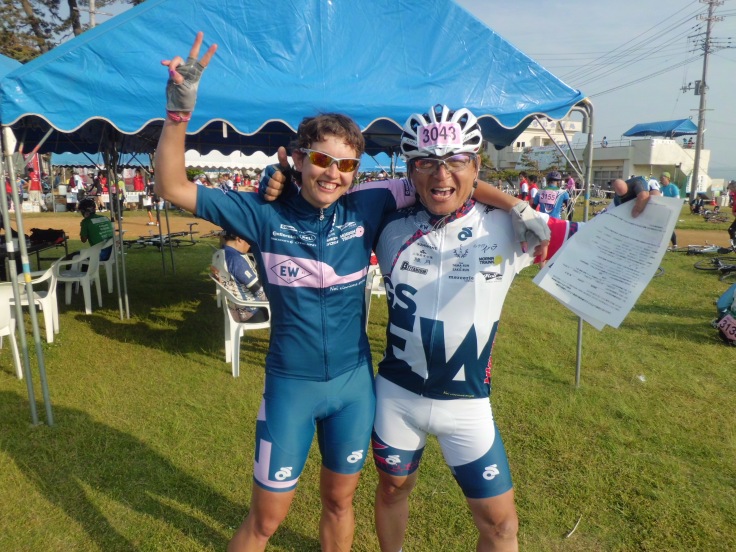
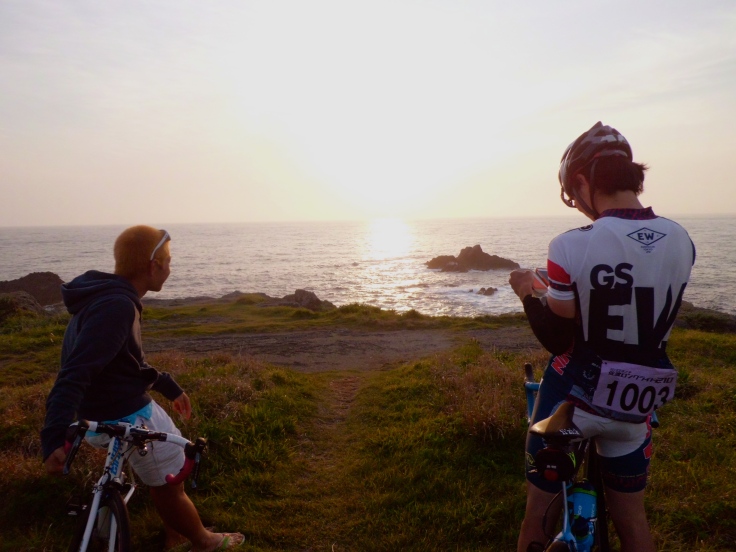
Catch Fire and Burn
Did you know that there is an answer? To the question, “who am I and what will I do with my life?”
Did you know that there is an answer that will light you up, set you on fire and make you burn?
I am only just now beginning to see that there is an answer. The light at the end of the tunnel isn’t daylight, it’s fire.
Chase it. Devour it. Consume it and own it and fuel your spirit.
Accept nothing less. To accept anything less is to waste the gift of life you have been given.
Do not pass your days meekly in the herd of other sheep. Do not let your eyes dim. Do not let Them tell you who you are or what you should be doing.
Burn. Catch fire and BURN!
Quote taken from Rebelle Society.